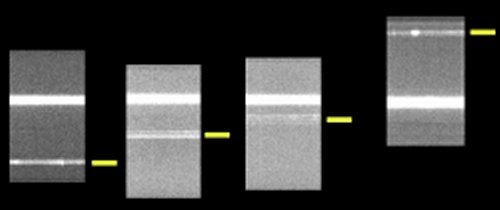These days, automated search programs discover most new comets. The rest go to keen-eyed amateurs, whose photographic memories and wide-angle binocular views lend themselves to spotting these cosmic vagabonds. But even astronomers can win the lottery sometimes — or at least catch a comet by pure chance.
On September 22, Sandhya Rao and Dave Turnshek, both of the University of Pittsburgh, were taking spectra of a bright star just after twilight at the MMT Observatory’s 6.5-meter telescope in southern Arizona. This, they thought, would help set up the telescope in preparation for their scheduled observations of faint quasars. Suddenly, as their exposure of BD+303639 came to an end, a new spectrum appeared.
A quick check revealed that both new spectra were identical, and that the team was seeing a new object moving at a rate of 2.2′ per hour along the spectrograph’s slit. Further exposures confirmed the motion of this interloper, but its spectrum remained a mystery. A back-of-the-envelope calculation showed the object’s apparent motion limited it to the solar system, but what could it be?
A comet or an asteroid seemed to be the most likely possibilities, and an analysis of the object’s spectrum identified it as a previously undiscovered 16th-magnitude comet. With time pressing, the astronomers moved onto their next target star, but despite calls to other telescopes in the hopes of capturing a confirming image, the object has not been observed again to date.










